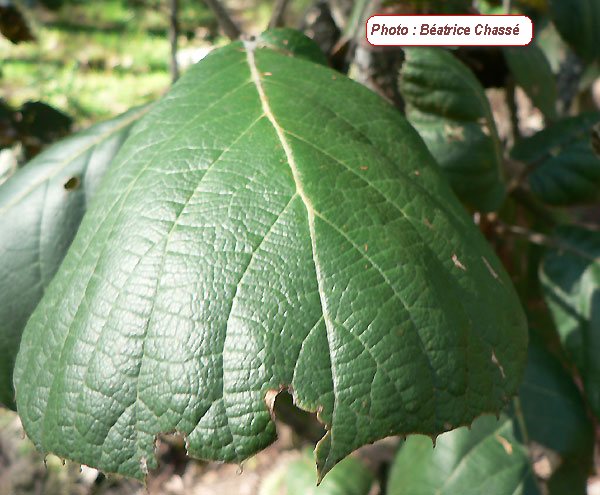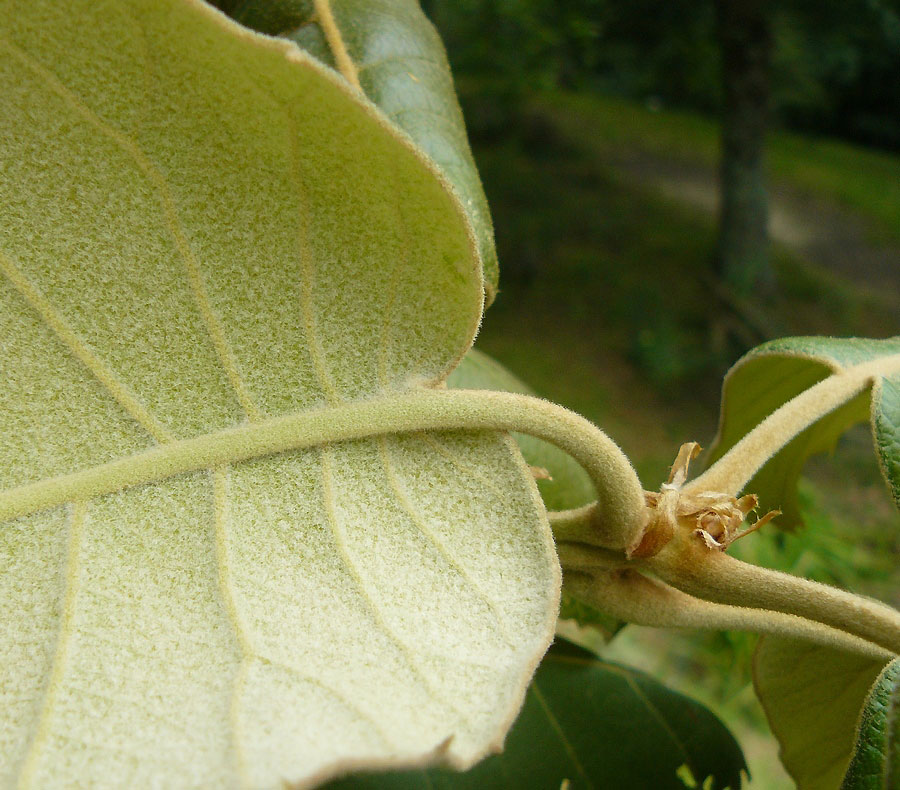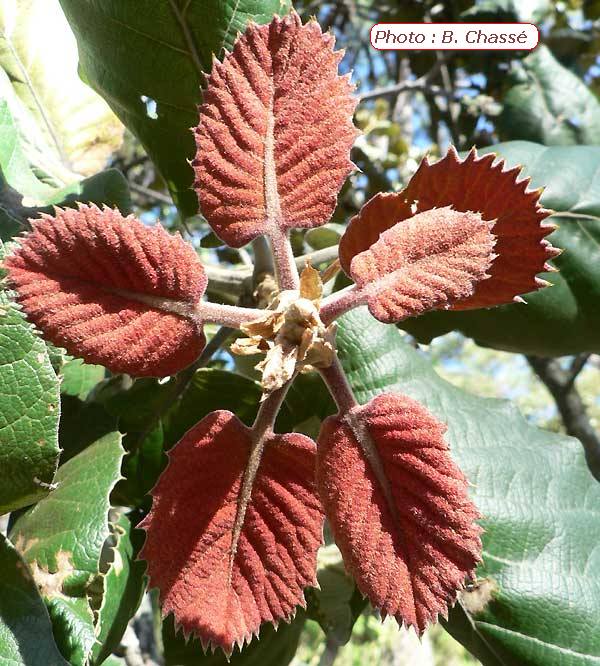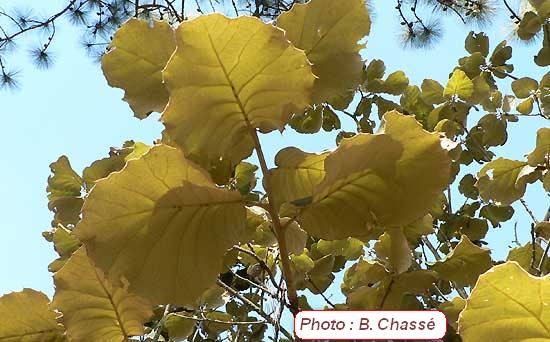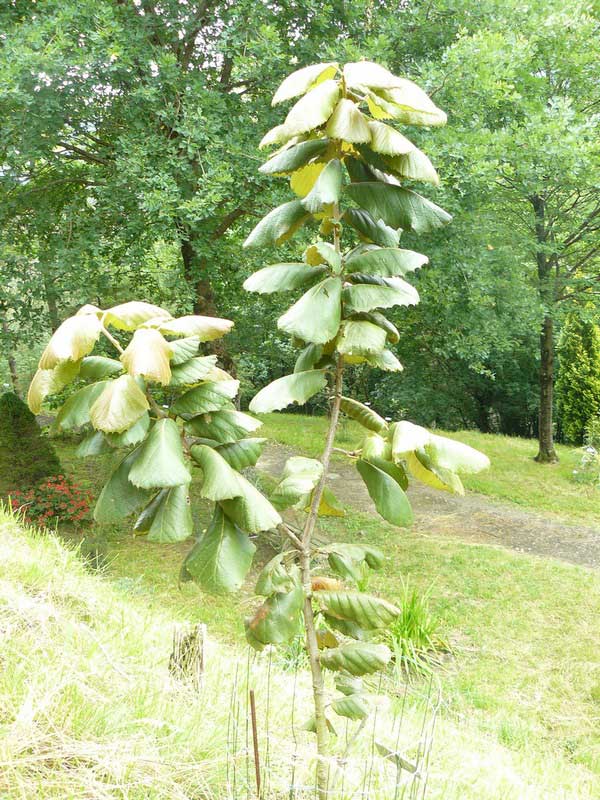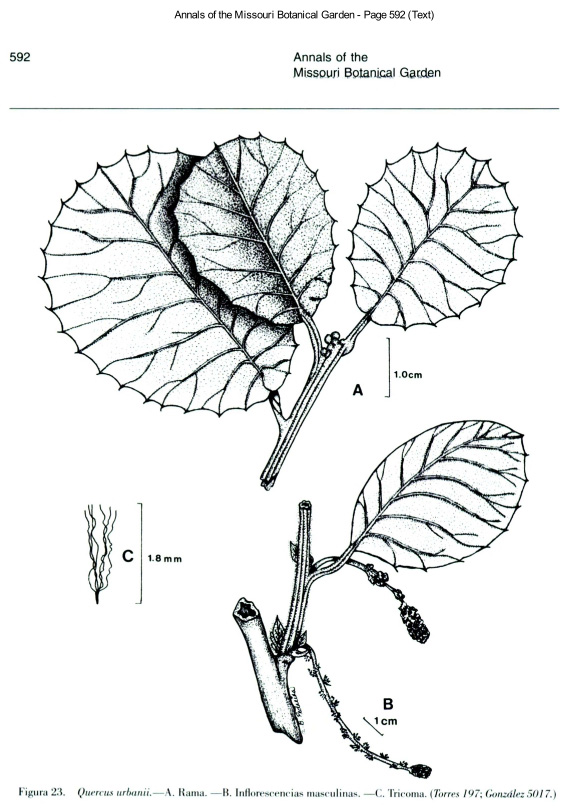| Quercus urbanii | |
| Author |
Trel. 1924 Proc. Amer. Philos. Soc. 60: 32 |
| Synonyms |
pennivenia
Trel. 1924 Diagnosis here |
| Local names | encino
cucharillo; |
| Range | Mexico in the South of the Sierra Madre Occidental (Guerrero, Durango, Jalisco, Nayarit, Mexico, Sonora, Zacatecas); 1500 - 2500 m ; |
| Growth habit | 6-12 m tall, with trunk to 0.3 m in diameter or more; thick branches very tomentose; |
| Leaves | 14-30
cm; deciduous; almost orbicular, oboval, oval-elliptic or panduriform;
stiff; convex; reticulate epidermis adaxially ; apex rounded; base narrowly
cordate; margin thick, revolute, cartilaginous, entire or wavy-dentate
with 5-20 pairs of small aristate teeth at apical 2/3; adaxially pale
green, lustrous, rough, glabrous except simple glandular hairs and stellate
ones on veins; densely yellowish tomentose beneath with stalked stellate
trichomes on the whole surface of the blade, trichomes with rayed to 3
mm long; 9-11 vein pairs, sinuous or curved, seldom straight; epidermis
papillose and glandular; petiole 2-4 cm long, tomentose; |
| Flowers |
in December-January; male catkins 10-20 cm long, with pubescent axis and
numerous flowers; pistillate flowers on 4-5 cm long tomentose racemes; |
| Fruits | acorn 8-10 mm long, ovoid; 6 to 10 together on a yellow tomentose stalk reaching 9 cm long; small cup, half-round, enclosing 1/3 or 1/2 of nut; maturing in 1 year, in October; |
|
Bark, twigs and |
twigs
6-10 mm thick, yellow grey tomentose during several years, with inconspicuous
lenticels; buds 5-10 mm long, ovoid, brown; |
| Hardiness zone, habitat | not
hardy; poor calcareous soils; |
| Miscellaneous | --
A. Camus : n° 311; -- Sub-genus Quercus, section Lobatae, Subsection Erythromexicanae, Group |
| Subspecies and varieties |
--
Q. conzattii Trel. 1921 = Q. urbanii f. parvifolia Martinez 1954 Many Authors consider it as a true species. However it is different from Q. urbanii only in having all its parts smaller, leaves never panduriform, and some other minor features...See Q. conzattii. -- The northern occurrence of Q. urbanii, (sensu Spellenberg & Bacon 1996), corresponding to a separate genetic lineage for McCauley & al. (2020), can be ascribed to Q. pennivenia. |
| Pictures |
|
